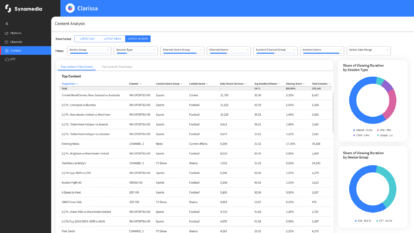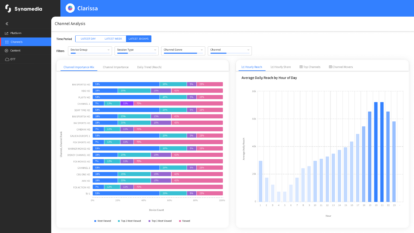The FCC’s 2020 reallocation of the lower C-band caused significant technical, operational, and financial challenges for distribution customers, including broadcasters, cable operators, and content distributors.
Reduced satellite capacity led customers to shift services to upper C-band, Ku-band, or terrestrial options. Clearing the lower C-band required LNB replacements and brought the 5G frequencies closer. Some customers moved to upper C-band with new compression technology, while others switched to terrestrial distribution.
That was under the “easy” scenario, where 280 MHz of spectrum was reallocated and there was still room to repack. Now broadcasters face a challenge in losing access to upper C-band (3.98-4.2 GHz), as the FCC’s WT Docket No. 25-59 may reallocate up to 200 MHz more, with a minimum of 100 MHz clearance required by July 2027 under the OBBB Act (July 2025).
And that raises a chilling possibility: What happens if there’s no C-band left to fall back on?
Distribution Options to Consider
Everyone is wondering how to distribute without upper C-band, and it’s doubtful that a one-size-fits-all solution exists, especially if there is insufficient C-band spectrum available after clearance. This raises the question on viable alternative options.
Uptime, Stability & “Always-On” Broadcast Requirements
Distribution isn’t just about speed. It’s about predictable, uninterrupted uptime. GEO stationary satellites like those used for C-band delivery provide continuous coverage over fixed footprints with minimal risk to services interruption.
Ku-band
The viability of Ku-band spectrum with its vulnerability to rain fade have questioned its suitability as a robust alternative, but VSF TR-06-4 part 7 specification promises a RIST-based recovery method using internet as a selective recovery path for lost or corrupted packets. This hybrid satellite IP model has the potential to achieve broadcast-grade reliability with an increase in transmission latency and a dependency on last-mile connectivity performance.
Terrestrial
If a hybrid Ku-band/IP model that relies on IP is viable, the next question is why not switch to a pure IP model and potentially reduce operational costs and complexity. Terrestrial distribution is already used for global delivery and can provide broadcast-grade reliability, so why isn’t this the obvious choice for transitioning away from C-band? The challenge is last mile connectivity at all receive locations and guaranteed bandwidth to deliver service 24/7, 365 days a year. Many locations will have sufficient connectivity, but ubiquitous access is still a challenge especially in rural areas in terms of reach and bandwidth, and then there is the added risk of fibre cuts, a problem that did not impact satellite and the resulting restoration time of hours or days that does not work for a live 24/7 service.
The last-mile connectivity and robustness challenge
It seems that any technology other than a pure satellite distribution model will face a last-mile challenge, so why not utilize a hybrid IP model, using a mix-and-match approach of connectivity based on location and bandwidth needs. Using two physical networks would naturally provide resilience with IP packet-based switching to maintain quality of service. This could be achieved with dual and diverse Fibre, but not all locations have a dual-fibre connectivity option, so what alternatives are there for providing an alternative last mile connection. Could 5G and LEO-based connectivity provide a resilient path? Both technologies are being widely rolled out with improved coverage and performance. After all, with C-band being repurposed for 5G capacity, it would provide a suitable backup connection as would LEO based IP services.
But what does this mean commercially, and is this transition viable?
Cost Models Are Still Evolving
One of C-band’s enduring strengths is predictability. Whether you’re broadcasting to one affiliate or 1,000, the cost of satellite transponder time stays fixed. In contrast, transitioning to IP, whether over Fibre, 5G, or LEO shifts the commercial model to one based on egress or content delivered, which introduces new cost challenges.
Most providers today are:
- Charging per site, or per bandwidth pipe (Mbps), or by Giga Byte usage (GB), often with commercial terms not yet optimized for broadcast grade SLAs and 24/7 375 high-throughput video.
- For broadcasters with dozens of linear channels and hundreds (or thousands) of affiliate endpoints, the cost to scale is far from clear.
Will these pricing model work for 24/7 distribution or is a new satellite-esque model needed to ease the transition. These questions remain and both technical and commercial challenges will need solution to transition off C-band spectrum.
Key Takeaways
In summary we have multiple technical solutions for a reliable distribution alternative to satellite C-band, enabling customers to select based on needs:
- Hybrid Satellite Ku / IP
- Pure IP over Fibre connectivity
- Hybrid IP over Fibre/5G/LEO
Multiple candidates have emerged, including satellite Ku-band, IP over terrestrial Fibre, 5G, and LEO or any hybrid combination. Each has its merits and disadvantages.
While the challenges are complex the benefits of transitioning to a hybrid IP solution would open new opportunities to lower regional operational complexity, offer differentiated services like UHD, regional languages, graphics and richer localised content, rather than the one size fits all approach which restricts choices and drives complex regional processing, allowing content owners and broadcasters to adapt to changing consumer demand.
Next steps to consider
Instead of banking on one “silver bullet” solution, this is the moment to:
- Map out your affiliate delivery landscape: urban vs. rural, terrestrial vs. satellite
- Pressure-test different transport paths: Ku, Fibre, IP, LEO
- Model cost, quality, and redundancy under different spectrum loss scenarios
- Start conversations with partners who understand the real-world challenges of infrastructure migration
At Synamedia, we work with broadcasters like you to design distribution strategies that match their technical, operational, and commercial realities.
Whether your path leads toward private CDNs, managed IP delivery, or hybrid satellite integration, we can help you stay ahead of change, without compromising reach, resilience, or ROI.
Let’s explore which options are viable for your footprint and content mix.












